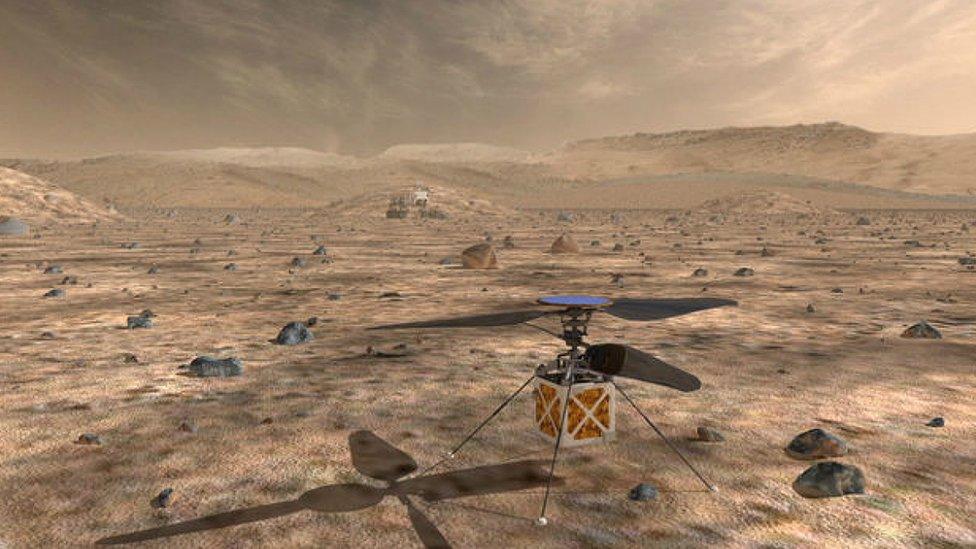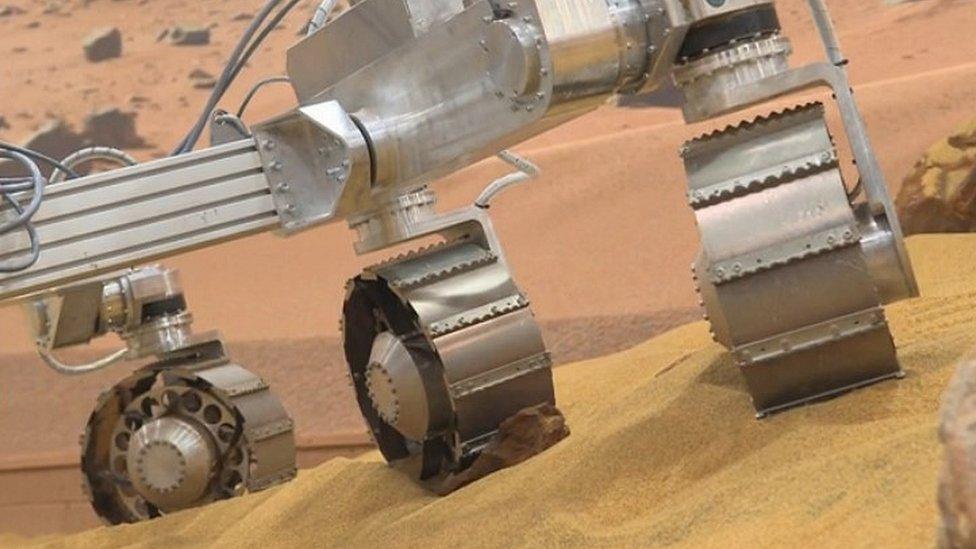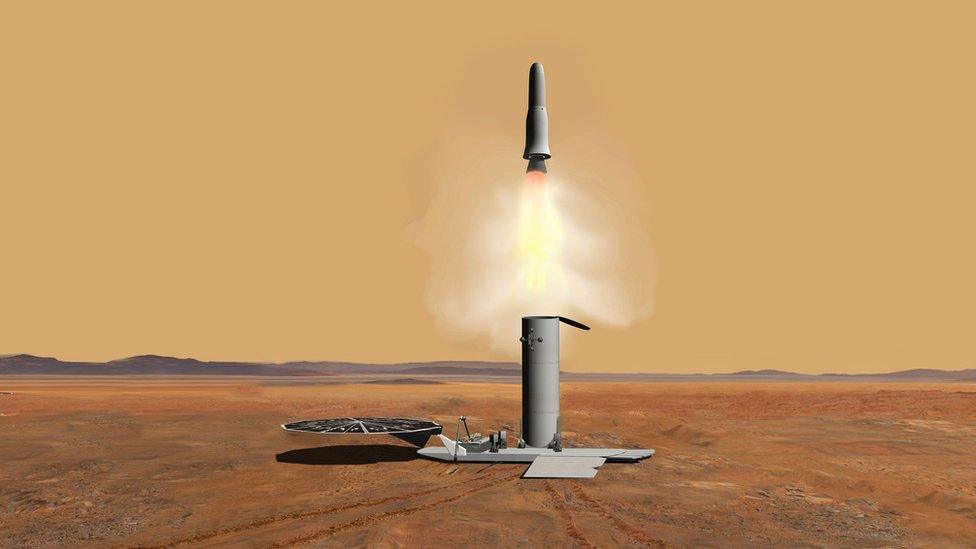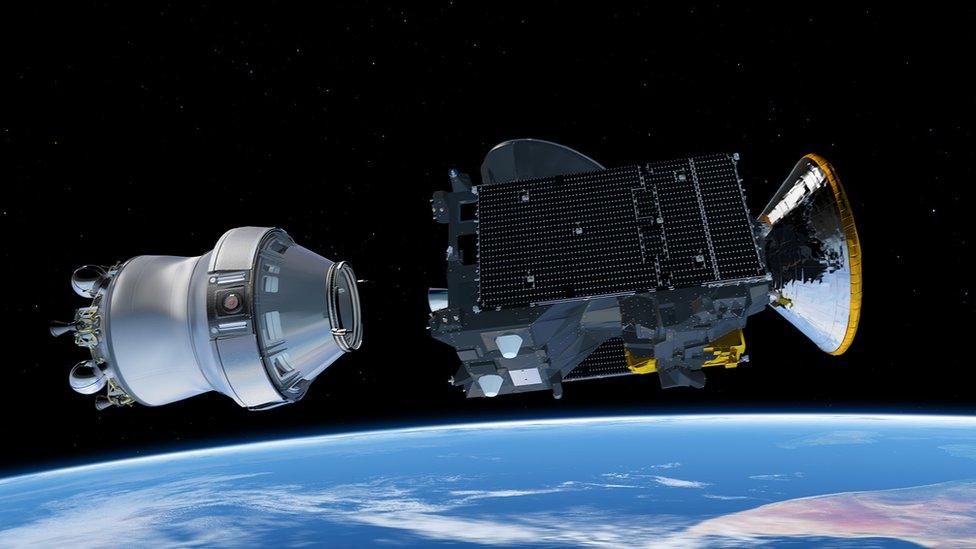Nasa will send helicopter to Mars to test otherworldly flight
- Published
Nasa is sending the helicopter to Mars for a mission in 2020
Nasa is sending a helicopter to Mars, in the first test of a heavier-than-air aircraft on another planet.
The Mars Helicopter will be bundled with the US space agency's Mars rover when it launches in 2020.
Its design team spent more than four years shrinking a working helicopter to "the size of a softball" and cutting its weight to 1.8kg (4lbs).
It is specifically designed to fly in the atmosphere of Mars, which is 100 times thinner than Earth's.
Nasa describes the helicopter as a "heavier-than-air" aircraft because the other type - sometimes called an aerostat - are balloons and blimps.
Soviet scientists dropped two balloons into the atmosphere of Venus in the 1980s. No aircraft has ever taken off from the surface of another planet.
The helicopter's two blades will spin at close to 3,000 revolutions a minute, which Nasa says is about 10 times faster than a standard helicopter on Earth.
"The idea of a helicopter flying the skies of another planet is thrilling," said Nasa Administrator Jim Bridenstine.
"The Mars Helicopter holds much promise for our future science, discovery, and exploration missions to Mars."
While the tiny craft is being called a helicopter rather than a drone, there will be no pilot.

Nasa provided this computer-generated image of the helicopter's design
It will be flying almost 55 million km (34 million miles) from Earth, too far away to send a remote control signal.
"Earth will be several light minutes away, so there is no way to joystick this mission in real time," said Mimi Aung, the project manager at Nasa's Jet Propulsion Laboratory.
Instead, the helicopter will "fly the mission on its own".
The JPL team made the minuscule helicopter as strong as possible to give it the best chance of surviving.
"The altitude record for a helicopter flying here on Earth is about 40,000 feet," Ms Aung said. "When our helicopter is on the Martian surface, it's already at the Earth equivalent of 100,000 feet up."
That is part of the reason why Nasa is calling the Mars helicopter a "high risk" project.
"If it does not work, the Mars 2020 mission will not be impacted. If it does work, helicopters may have a real future as low-flying scouts and aerial vehicles to access locations not reachable by ground travel," Nasa said in a statement.
Existing Mars vehicles have been wheeled devices, which have to navigate around many obstacles in their path and have been confined to fairly large open spaces on the surface of Mars.
One such vehicle, the Spirit rover, got stuck in a patch of sand in 2009, where it eventually ran out of power and shut down.
The Mars 2020 rover - accompanied by its helicopter companion - is due to launch in July of that year and arrive on the red planet in February 2021.
- Published21 October 2015

- Published26 April 2018

- Published20 April 2018
- Published17 April 2018

- Published14 March 2016
